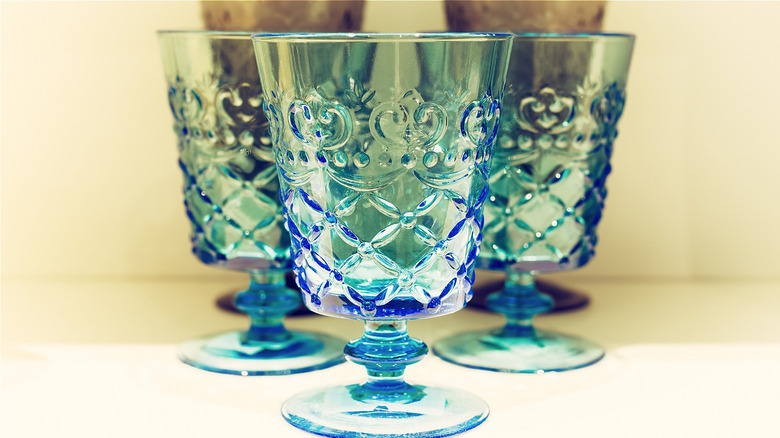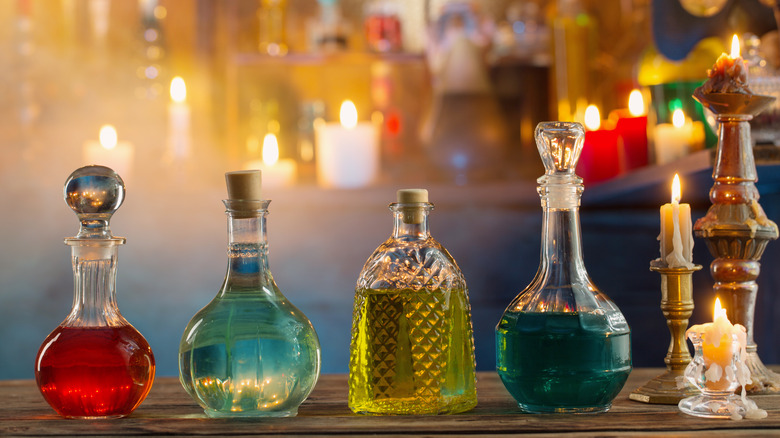You Should Check If Your Vintage Glassware Is Safe To Drink Out Of
If you've been hitting up your local garage sales or thrift stores this spring, you've probably been tempted by a set or two of gorgeous-looking vintage glasses. While pouring champagne into a shiny, colored glass flute would certainly add an unforgettable Great Gatsby-esque flair to your next cocktail party, there's a chance your vintage glasses could be hiding a lot more than just old-world elegance.
While the glassware is undoubtedly beautiful, the vintage methods used to make it weren't as refined as they are today. Chemicals such as lead oxide used to be commonplace in the glass manufacturing process and while we know these substances to be harmful today, glassmakers of the past used them to improve the glass' appearance (via America's Test Kitchen).
Since poisoning your dinner guests would be the ultimate party faux pas, it's good practice to check to see if your glassware does in fact contain lead before using it to serve your favorite merlot. While these methods aren't guaranteed, a few simple ways to do this include taping the glass with a knife and listening for a high-pitched ringing sound, and checking to see if the glass produces a rainbow when white light is shone through it, as suggested by America's Test Kitchen. While the idea of lead hiding in your prized wine glasses is alarming, whether you have to relegate your favorite cups to the china cabinet seems to be a hotly debated topic.
Using vintage glassware may be safe under certain circumstances
Lead is a cumulative toxin, meaning it takes time to build up to unsafe levels in the body, which is why some experts believe that using vintage glassware once or twice probably doesn't pose as much of a risk as using the vessels for daily use, per America's Test Kitchen.
Since lead poisoning can lead to serious health consequences, especially for pregnant people and children, some people may choose to take a more conservative approach to deciding whether or not to use vintage glasses.
The Center for Environmental Health warns that any glassware in your collection that was produced before the 1970s probably contains lead levels that would be deemed unsafe by today's standards, making them a potential household hazard. For this reason, it's probably best to avoid using vintage glasses for even the occasional glass of champagne if you belong to a population that is most at risk for the harmful effects of lead poisoning, or if you'd just prefer to err on the side of caution.
Luckily, lead-free alternatives to crystal glassware do exist, meaning you don't have to sacrifice your vintage aesthetic for the sake of your health. While these lead-free glasses are modern, they look strikingly similar to their old-world counterparts. With so much information available on the risks of using leaded glass and the availability of alternatives, you'll be able to make a decision about what glassware is best for your health.

